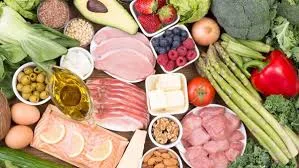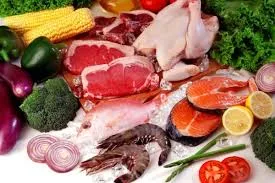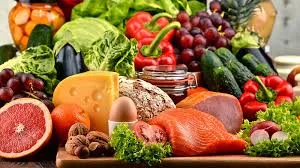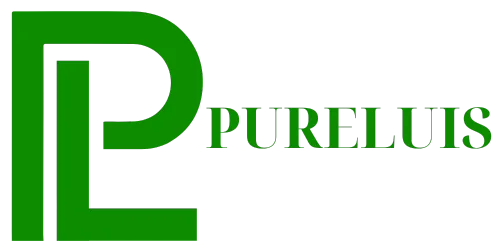News
Beyond the Label: The Pureluis Promise of Clean, Fresh Food
1. Why Traceability Matters More Than Ever: The Trust Factor
In today’s world, trusting where your food comes from can be hard. Labels are often confusing, and sometimes, “local” just means it was grown nearby, not necessarily grown cleanly. That’s why at Pureluis, we don’t just ask our suppliers where they got their food; we walk the fields with them. We don’t just rely on a piece of paper; we rely on a full, verifiable story.
Traceability is just a fancy word for trust. It means we can tell you exactly when, where, and how your food was grown, caught, or raised. For us, that story needs to be clean, honest, and easy to follow.
1.1. What is ‘Clean Sourcing’ to Pureluis?

When we talk about clean sourcing, we’re not just talking about food that looks good. We are focused on three core principles:
- Safety First: Absolutely no harmful chemicals, heavy pesticide residues, or questionable antibiotics. If it doesn’t meet our strict safety bar, it doesn’t make it to your basket.
- Environmental Care: We partner with farms and fishermen who respect the land and the water. This means sustainable practices that keep the environment healthy for the next harvest.
- Full Transparency: Every product has an identity. If you ask us about the farmer who grew your cabbage, we’ll give you their name. That’s the Pureluis standard.
1.2. The Difference Between ‘Local’ and ‘Verified Local’
Everyone loves “local,” but that term doesn’t guarantee quality or safety. Verified local, which is what Pureluis demands, means that the product is not only grown close by (reducing travel time and keeping it fresh) but has also been through our rigorous check system. We verify the soil, the water, the farming methods, and the final handling before it earns the Pureluis stamp.
2. The Pureluis 3-Step Verification System
Our traceability process is systematic. It’s a three-layered defense to make sure the food you put on your family’s table is the best of the best
2.1. Step 1: Farm Audits – We Visit the Fields
Before we agree to work with any supplier, a Pureluis team member physically visits the farm, facility, or fishing boat. This isn’t just a quick tour; it’s a full audit.
- What We Look For: We check the water source, how close the farm is to potential pollutants, the cleanliness of the storage areas, and most importantly, the attitude of the farmer. Do they genuinely care about safety?
- Ongoing Checks: These audits don’t stop after the first delivery. We perform surprise inspections throughout the year to ensure compliance never slips.
2.2. Step 2: Certification Check – VietGAP and Beyond
Certifications like VietGAP (Vietnamese Good Agricultural Practices) are essential. They provide a legal, structured baseline for food safety.
- The Baseline: We only accept suppliers who hold valid and recognized certifications. This confirms they adhere to national standards for pest control, sanitation, and harvesting.
- The Pureluis Layer: We often require our partners to adhere to standards that exceed the legal minimum, especially concerning pesticide withdrawal periods and handling practices. We demand higher safety margins.
2.3. Step 3: Cold Chain Integrity – From Farm to Your Door

Traceability doesn’t end when the food leaves the farm; it continues all the way to your kitchen. The cold chain is the unbroken sequence of refrigerated temperatures required to keep food safe and fresh during transport.
- Temperature Monitoring: Our logistics partners use temperature-controlled trucks and monitoring systems to record temperatures every step of the way. If the temperature spikes, we know immediately, and that batch is rejected.
- Speed is Essential: We work tirelessly to minimize the time between harvest and delivery. Less time equals more freshness and better flavor for you.
3. Deep Dive: Tracing Our Signature Produce (Veggies and Fruits)
Fresh produce is the heart of Pureluis, and it requires the most vigilant tracking because it is so delicate and susceptible to contamination.
3.1. The Farmer’s Commitment: No-Toxin Farming
We look for partners who treat their land with respect, understanding that healthy soil leads to healthy vegetables.
- The Role of Soil Health: Our auditing process includes checking the soil. Healthy soil is rich in natural nutrients and microbes, which means the farmer relies less on synthetic fertilizers. We believe good vegetables start in good dirt.
- How We Monitor Pesticide Use: We maintain strict control over chemical use. Even if a pesticide is legal, we require a much longer withdrawal period (the time between the last application and harvest) than legally mandated. We also send random samples to independent labs for residual testing. If a sample fails, the whole harvest is blocked.
3.2. From Harvest to Shelves: Our Time Constraint
Produce quality degrades the moment it is picked. Our sourcing strategy is built around one simple clock: time.
- Harvest Scheduling: We often coordinate with farmers to harvest only after your order has been placed, or at times that perfectly align with our shipping schedule. We minimize warehouse holding time to less than 12 hours whenever possible.
4. The Meat Standard: How We Verify Animal Welfare and Health
Meat traceability is about far more than just farm location; it’s about the life of the animal and its health management.
4.1. Our Pork and Poultry Sourcing Philosophy
We believe healthier animals produce safer, better-tasting meat.
- Antibiotic and Hormone-Free Guarantee: This is non-negotiable. We only partner with farms that commit to raising animals without growth hormones or the routine use of antibiotics. Antibiotics are only used when an animal is genuinely sick, and that animal is removed from the Pureluis supply chain until a lengthy withdrawal period has passed.
- Tracking the Feed: We audit the feed that animals consume. Is it natural? Is it non-GMO? The cleanliness and source of the feed directly impact the quality and safety of the final meat product.
4.2. Traceability IDs: Every Cut Has a Story
Every batch of meat, from a single chicken to a shipment of pork, is assigned a unique tracking number at the processing facility.
- Farm to Fork Link: This number links your specific cut of meat directly back to the original farm, the date of processing, and the health records of the animal group. If a question arises, we can trace it back instantly.
5. Following the Catch: Seafood Traceability and Clean Waters
Seafood poses unique traceability challenges because it moves. Our focus is on the fishing vessel, the water quality, and the handling process once it’s caught.
5.1. Sourcing from Certified Clean Fishing Areas
We prioritize sourcing from known fishing cooperatives and farms that operate in waters confirmed to be pollution-free by regular testing.
- Ensuring Sustainable Practices: We avoid suppliers known for aggressive or destructive fishing methods. Our partners are required to use methods that minimize bycatch and protect the marine environment for future generations.
5.2. Rapid Transport: The Essential Role of Ice and Speed
Seafood freshness is defined by minutes, not hours.
- Icing and Handling: From the moment of catch or harvest, seafood is immediately buried in ice and kept at near-freezing temperatures. Our processing facilities are designed to process, pack, and chill the seafood rapidly, often operating within a few hours of the catch coming ashore.
6. Certification Explained: Understanding the Labels You See
It’s easy to get lost in the jargon. Here’s a simple breakdown of the main standards we reference.
6.1. VietGAP: What It Means in Simple Terms (The Vietnamese Standard)
VietGAP is a set of national voluntary standards ensuring safety and quality from cultivation to harvest.
- The Key Takeaway: When you see a VietGAP certification, it confirms that the farmer follows rigorous protocols to manage pests, water usage, and sanitation. It’s a guarantee of a consistent, safe baseline.
6.2. Why We Go Beyond the Minimum Requirements
While national standards are good, we know that consumers who shop at Pureluis demand better.
- Our Quality Buffer: We maintain an internal “quality buffer,” meaning we voluntarily adhere to stricter limits (e.g., lower allowable pesticide residue levels, shorter travel times) than the law requires. This is our promise to you that “safe” for us means “exceptional” for your family.
6.3. Organic vs. Clean Sourced: Which is right for you?
- Organic: This is a legally defined label focused heavily on excluding synthetic pesticides and fertilizers. It involves complex documentation.
- Pureluis Clean Sourced: While some of our products are certified organic, our broader Clean Sourced philosophy is a promise of transparency, immediate freshness, and rigorous testing, which sometimes matters more than the organic label itself. We verify the actual farming practices and test the actual product.
7. Your Role: How to Use Our Traceability System

This transparency is only useful if you can access it. We’ve made it simple for you to look up the source of your food.
7.1. Scanning the QR Code: A Walkthrough
Many of our products carry a unique QR code right on the label.
- How to Use It: Just use your smartphone camera to scan the code. It will instantly take you to a dedicated webpage for that specific batch.
- What You Need: No special app is required. Your standard phone camera is enough!
7.2. What to Look for on the Product Profile
The webpage will show you the full “passport” of your product. Key data points to look for include:
- Sourcing Farm Name/Location: The exact origin.
- Harvest/Processing Date: Crucial for confirming freshness.
- Certifications: Copies of the relevant VietGAP or other certificates.
- Last Audit Date: When Pureluis last physically inspected the facility.
8. Conclusion: Our Promise to Your Family’s Table
Traceability at Pureluis isn’t just a marketing gimmick; it’s the foundation of our entire business. We believe you have the right to know exactly where your food comes from, and we take pride in being able to give you that honest, transparent answer.
When you buy from Pureluis, you’re not just buying clean, fresh food; you are buying peace of mind. We do the hard work of verification and auditing so that you can simply trust that the meal you are preparing is safe, wholesome, and delicious. Thank you for trusting us with your family’s health.
9. The Anatomy of a Batch ID: Decoding Your Product’s Passport
Every single item that comes from a verified Pureluis supplier has a Batch Identification (ID) Number—a seemingly random set of letters and numbers that is actually the key to your food’s entire history. Understanding this code is the ultimate proof of our commitment to transparency.
9.1. The Three Layers of the Traceability Code
Our Batch ID isn’t simple; it’s a three-part fingerprint that tells a complete story about the product in your hand.
9.1.1. The Origin Marker (Where It Began)
The first few characters of the ID are specific to the exact geographical origin—the precise farm, facility, or fishing vessel.
- Example for Produce: If your product is a vegetable, the marker might link to the GPS coordinates of the growing field, ensuring you know it didn’t come from a wholesale market but from the specific, verified Pureluis partner farm. This level of detail guarantees no substitutions occur between the farm gate and our distribution center.
- Example for Seafood: This marker identifies the registered boat number and the certified clean fishing zone where the catch was made. This is essential for confirming ethical and sustainable sourcing practices.
9.1.2. The Time Stamp (When It Was Handled)
The middle section of the code represents the exact time stamp—the day, and sometimes even the hour, of harvest, processing, or packaging.
- Confirming Freshness: This is the tool that validates our promise of speed. You can cross-reference the packaging date on the label with the time stamp in the Batch ID. A smaller gap between the time stamp and the delivery date means fresher food.
- Identifying Micro-Batches: In a large facility, processing happens in continuous streams. The time stamp helps us isolate food down to a small micro-batch, meaning if there is ever an issue, we only have to recall a few boxes, not an entire day’s worth of production.
9.1.3. The Handler Code (Who Managed It)
The final part of the code identifies the specific Pureluis handler or quality control specialist who performed the final inspection and packaging.
- Internal Accountability: This provides an extra layer of responsibility. It tells us which team member approved the item for distribution and verifies that all temperature and quality checks were completed before the product left our facility for delivery. This ensures our internal standards are always met.
9.2. How Batch ID Systems Protect You (The Safety Layer)
The real value of this complex system is safety. In the extremely rare event of a product issue, the Batch ID allows us to:
- Pinpoint the Source Instantly: Instead of taking days, we can trace the problem back to the single farm or batch in minutes. This speed is crucial for food safety.
- Targeted Recalls: We don’t have to launch a widespread, expensive recall that wastes safe food. We can identify exactly which customers received the compromised batch and contact them directly, making our response fast, precise, and respectful of your time and safe food supplies.
- Continuous Improvement: Every issue, no matter how small, is logged against the farm’s ID. If a supplier has repeated issues, our verification system automatically flags them for re-auditing or removal from the Pureluis network.
10. Your Questions Answered: Pureluis Transparency in Practice
We believe a truly transparent company doesn’t hide behind technical papers; it directly addresses the concerns and tough questions customers have.
10.1. What is the Protocol if a Product is Recalled?
Recalls are rare, but when they happen, speed and communication are paramount.
- Immediate Action: As soon as we identify a risk through the Batch ID system, we immediately stop all sales of that product and isolate the remaining inventory.
- Direct Customer Notification: Because we track every sale, we don’t rely on general public announcements. We use your purchase history to contact you directly—via email or phone—if you received the compromised batch, providing clear instructions on what to do.
- Full Refund, No Questions: We immediately issue a full refund or credit for the affected product. Your safety and trust are our top priorities, far outweighing the cost of the product.
10.2. How Do You Measure Sustainability Beyond the Certifications?
Certificates confirm compliance, but sustainability is about ongoing, measurable commitment.
- Water Management Metrics: We audit our partner farms on their water usage per kilogram of produce. We favor those who implement drip irrigation and rainwater harvesting, proving a genuine commitment to conservation.
- Waste Reduction Goals: We work with our suppliers to minimize packaging waste and find uses for “ugly” produce (like sending it to processing partners for healthy sauces or juices). Our goal is to minimize the amount of perfectly safe food that goes to waste simply because it isn’t visually perfect.
- Carbon Footprint Tracking: We are actively monitoring the travel distance for all major products to continuously optimize our logistics and reduce the overall carbon emissions associated with getting your food from the farm to your door.
10.3. What If I Can’t Scan the QR Code or Check the ID?
Our system should be simple, but technology isn’t always perfect.
- Customer Support Line: If you have any trouble scanning the code, simply call our dedicated customer support number. Provide the Batch ID number printed on the package, and our team will verbally walk you through the product’s entire profile, including the farm name and harvest date.
- Your Right to Know: We view this information as a non-negotiable part of the product. If you have any doubt about the origin, we want you to call us immediately.
10.4. What’s Next for Pureluis Traceability?
We are constantly improving our transparency tools. Looking ahead, our goals include:
- Live Farm Feeds: We are exploring technology that would allow you to view a live, timestamped picture or short video clip of the farm or facility that handled your specific Batch ID product on the day of processing.
- Enhanced Cold Chain Data: Providing customers with the exact temperature log of their specific order during transit, accessible via the Batch ID link. This is the ultimate proof of our cold chain integrity.
11.1. Explaining the Date Jargon
It’s easy to throw out perfectly good food because of date confusion. Here is the simple breakdown of the most common terms:
- “Sell By” Date: This date is primarily for the retailer (the store or distributor). It tells us when the product should be removed from the shelf to ensure the customer has enough time to enjoy it at home before its quality declines. It is not a safety cutoff.
- “Best By” or “Best Before” Date: This date refers to peak quality, not safety. It’s the manufacturer’s estimate of when the product will taste its best, or when its nutritional value will be highest. You can typically consume food past this date, assuming it has been stored correctly and shows no signs of spoilage (mold, off-odor).
- “Use By” or “Expiration” Date: This is the most serious date, especially for highly perishable items like raw meat and certain dairy products. This date indicates the final recommended use for food safety. We advise strictly adhering to this date for maximum risk reduction.
11.2. How Pureluis Extends Real Usable Life
Because Pureluis controls the entire supply chain, our food often remains fresher longer than products bought through conventional channels. Our verified system directly impacts how much useful life you get from your food:
- Cold Chain Assurance: The key difference is our unbroken cold chain. If a product is briefly left on a warm loading dock (a break in the chain), the chemical aging process accelerates. By guaranteeing a stable, low temperature from the farm to your door, we maximize the time the product can remain safe and fresh.
- Harvest Proximity: Our commitment to sourcing locally means the time gap between Harvest Date (which you can check via the Batch ID) and the Sell By Date is much smaller. This means you receive the full, true shelf life of the product.
- Your Role in Preservation: Remember, the dates are only accurate if you maintain the cold chain at home. Once you bring a perishable item home, immediately storing it on a stable shelf (not the fridge door) is the final, crucial step in preserving its usable life.
11.3. The Sensory Check: Trust Your Senses
While dates are important, the most reliable safety check is always your own senses:
- Visual Check: Does the color look right? Is there mold? Is the packaging bulging (a sign of gas production from bacteria)?
- Odor Check: Does it smell sour, off, or rancid? If your nose alerts you, discard the product immediately.
- Texture Check: Is the meat slimy? Are the vegetables excessively soft or sticky?
By relying on both our verified Batch ID and a sensible sensory check, you can confidently maximize the life of the high-quality food you buy from Pureluis.

